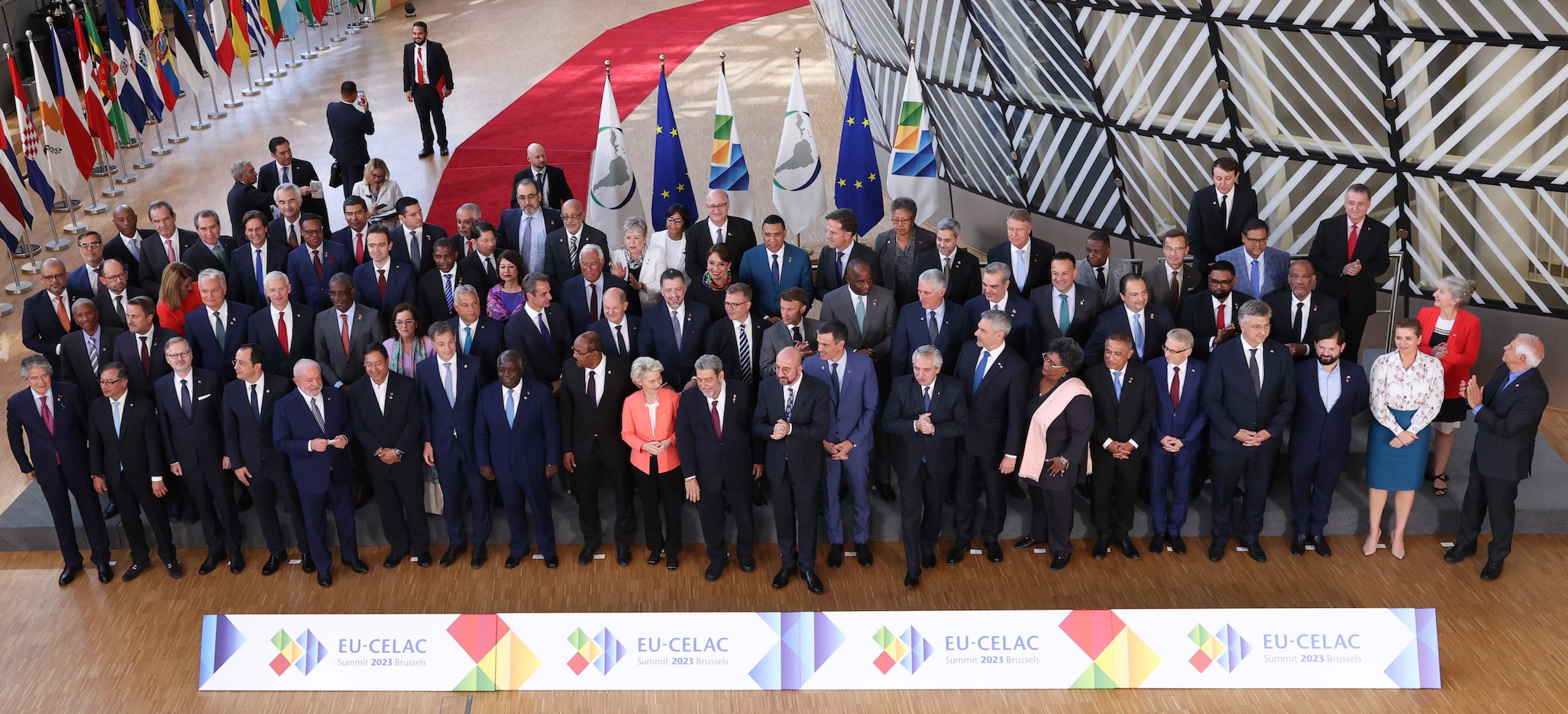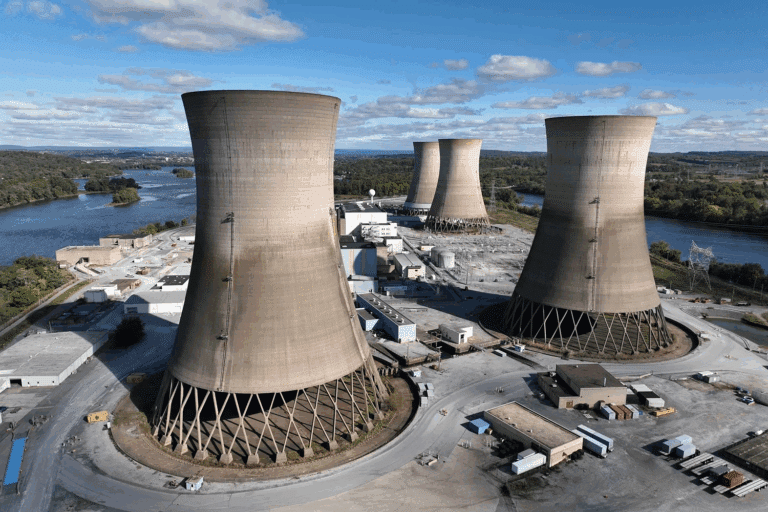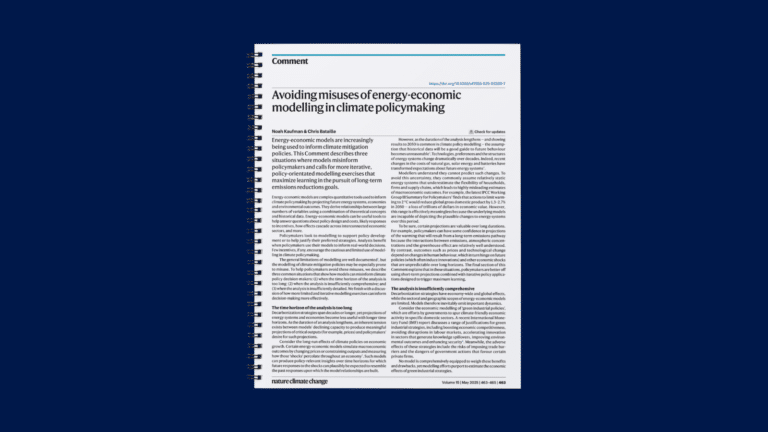This Energy Explained post represents the research and views of the author. It does not necessarily represent the views of the Center on Global Energy Policy. The piece may be subject to further revision. Contributions to SIPA for the benefit of CGEP are general use gifts, which gives the Center discretion in how it allocates these funds. Rare cases of sponsored projects are clearly indicated.
For a full list of financial supporters of the Center on Global Energy Policy at Columbia University SIPA, please visit our website at Our Partners. See below a list of members that are currently in CGEP’s Visionary Circle. This list is updated periodically.
With the European Climate Law, the European Union (EU) has adopted binding legislation requiring it to achieve a 55 percent reduction in greenhouse gas (GHG) emissions by 2030 (compared to 1990 levels) and carbon neutrality by 2050 (European Union 2021).[1] Grounded in scientific evidence from the assessments of the Intergovernmental Panel on Climate Change (IPCC) and the Intergovernmental Science-Policy Platform on Biodiversity and Ecosystem Services (IPBES), the Climate Law reinforces the need to rapidly step up climate action, continue the transition to a climate-neutral economy, and address biodiversity loss. It also follows the growth strategy adopted with the European Green Deal in 2019 (European Commission 2019), converting the vision of a modern, resource-efficient, and competitive economy—with no net GHG emissions—into legal requirements.
At the same time, promotion of open trade is in line with the “four freedoms” that are the cornerstones of the European single market: the free movement of people, services, capital, and goods. These are widely seen in the EU as important for ensuring peace and prosperity, in Europe and beyond.[2] Free trade is also a crucial necessity for Europe, given its significant need to rely on other countries’ energy and raw materials for its economy and industry.
In this article—the first of a series focused on opportunities for collaboration between the EU and the Latin America and Caribbean (LAC) region—the authors discuss why the transformational nature of European policies could match the large resource base and renewable energy potential available in LAC countries, with the possibility of leading to win-win opportunities.
At less than 5 percent, LAC countries’ share in European trade is currently low (EEAS 2022). Moreover, European interest in importing raw materials (not just lithium, but also copper and other metals/ores) and energy from the LAC region may clash with the latter’s own interest in industrialization. Yet there are signals that enhanced exchanges could be mutually beneficial.
- First, even if Europe is now behind both China and the United States as a trading partner for LAC countries (Nolte 2023, Rocha Rios 2017), European companies are a leading investor in the region (EEAS 2022, Nolte 2023).
- Second, the revitalization of EU’s trade and association agreements with 27 of the 33 LAC countries has the potential to support economic growth for both parties (EEAS 2022).
In 2022, the European Commission outlined how EU trade agreements can better contribute to promote the protection of the environment and labor rights worldwide (European Union 2022a). This complemented a range of other initiatives, including a Carbon Border Adjustment Mechanism (CBAM) meant to protect its industry from the risk of “carbon leakage”;[3] regulation aimed at the placement of deforestation- and forced-labor-free products in the EU market; eco-design requirements aimed at aligning products with the principles of economic circularity; a sustainable finance framework aimed at improving capital flows to finance the transition to a sustainable economy; and due diligence practices to foster sustainable and responsible business conduct throughout global value chains.
EU trade partners will need to make important choices—in particular (but not only) with the finalization of the legal development of the CBAM (European Union 2023a). Below the authors discuss implications of EU’s climate policies for a potential partnership between Europe and LAC countries, with a focus on mutually beneficial opportunities.
Salar del Hombre Muerto lithium mine in Argentina. (Coordenação-Geral de Observação da Terra/INPE/Wikimedia Commons)
Implications of the European Climate Policy for Its Energy Mix and Global Trade
Europe currently imports 34 exajoules (EJ) of energy, almost entirely in the form of fossil fuels (and mostly as oil, petroleum products, and natural gas), representing 55 percent of its total primary energy demand (Eurostat 2023). Fulfilling the regulatory requirement set in the European Climate Law will inevitably require a major overhaul of the European energy mix.
As one of the top five consumers of energy globally[4] (while being comparatively poor in terms of fossil energy resource availability) and the world’s third-largest economy,[5] Europe’s actions to comply with these legal requirements and transition to net zero will not only be significant for global efforts to achieve the Paris Agreement targets, they will also have major repercussions on global trade and investment flows as well as industrial development patterns.
There will likely be an acceleration of efficiency enhancements in Europe’s energy end-uses, from vehicles to industrial and residential heating; increased reliance on locally produced low-carbon electricity; and growing exploitation of local heat resources, including via greater use of heat pumps. Local energy sourcing for Europe will need to be complemented by imports of low-carbon energy carriers or semi-finished goods.[6]
Europe’s technical knowledge, existing industrial assets, and lower cost of capital compared to some emerging economies enable Europe to remain attractive for future investments, especially if these strengths are supported by policies that preserve the EU’s strategic industry (Boone 2023). But low-cost and low-carbon renewable energy in other regions, combined with high mineral resource endowment,[7] can also steer European investment decisions toward industrial production located in the proximity of those resources, especially in regions that leverage the potential of green industrial parks (Hausman 2023).[8]
Implications of European Policy Choices for LAC
The LAC region is also a major energy consumer globally, accounting for 35 EJ in 2019. It is a sizable contributor to global GHG emissions, despite per capita energy-related CO2 emissions that are roughly 20 percent lower than those of Europe, and half of the OECD average (IEA 2023a). LAC also represents a global power in terms of biodiversity, renewable energies, agricultural production, and—importantly—raw materials (Borrel 2022).
The region has a significant exposure to climate change impacts (WMO 2021) that its population is concerned about (Latinobarometro 2021). LAC citizens also have a positive view of Europe and the European integration model, with Germany in particular seen as a leader and a model for development (Latinobarometro 2021).
Despite public awareness of climate-related challenges and favorable initial conditions (well represented by the high share of hydroelectricity in the power generation mix of specific countries), concrete action on climate change mitigation in Latin America is still far from the levels required by the ambition of the countries’ Nationally Determined Contributions (NDC) under the Paris Agreement. The largest six economies in the region[9] have pledged to reduce emissions by 34 percent by 2030, but this is only relative to the business-as-usual scenario (Cardenas and Orozco, 2023). With exceptions, such as Chile, Costa Rica, and Uruguay, the region takes an insufficient approach to climate policy action.
Progress through bilateral and subregional trade negotiations has also been slow so far, and a way forward may be to leverage progress already made in recent negotiation rounds. This can benefit from better LAC-wide coordination, with CBAM providing a timely opportunity as the LAC region can collectively influence trade developments in the context of the adoption of EU’s carbon pricing. An agreement regarding carbon pricing and CBAM rules can be the cornerstone of global action on this front. A more proactive approach to advancing climate policy in Latin America may offer major opportunities right now in light of the changes set in motion by the European Climate Law and subsequent policy instruments, within and beyond the “Fit for 55” policy package, aimed at operationalizing the Climate Law.[10]
Opportunities for Mutually Beneficial Developments
From Europe’s perspective, LAC as a region, with commitment to democratic principles and which rarely engages in external wars, is potentially a reliable trade partner.[11] From the LAC perspective, developing a strong climate partnership with Europe can be a successful strategy for re-industrialization, with a focus on green products. Generating the revenues to effectively protect LAC countries’ biodiversity can also be a byproduct of this partnership.
This series will explore specific areas of engagement for the EU and LAC countries, such as transport electrification, renewable energy, and the energy transition for heavy industry. One common thread will be Europe’s role as provider of capital and financing for the LAC region, as lowering the current cost of capital for LAC countries is critical to for them to advance on various fronts. Another will be Europe’s need to rely on other countries for low-carbon energy, products, and raw materials—highlighting the potential for LAC countries to be European partners in this respect, thanks to their high endowment of resources.
The EU’s commitment to the free circulation of people, goods, and capital, paired with a need to rely on other countries for energy and raw materials, form a strong basis for European interest in open trade and contributing capital toward sustainability and decarbonization goals. This feature may not be fully mirrored by trade relations with the United States; the Inflation Reduction Act does not define in clear terms the conditions for trade partners to benefit from policy support, even if their proposals promote both decarbonization and a broader range of sustainability requirements.[12]
For Europe and LAC countries, achieving mutually beneficial outcomes will require a new mindset. Both regions need to be aligned in terms of policy choices to achieve sustainable economic growth and reduce GHG emissions. Importantly, outcomes will not only depend on choices by single governments but also on the extent to which these decisions will be collectively taken.
CGEP’s Visionary Circle
Corporate Partnerships
Occidental Petroleum Corporation
Tellurian Inc
Foundations and Individual Donors
Anonymous
Anonymous
the bedari collective
Jay Bernstein
Breakthrough Energy LLC
Children’s Investment Fund Foundation (CIFF)
Arjun Murti
Ray Rothrock
Kimberly and Scott Sheffield
Notes
[1] Any revision would need a new legislative proposal by the European Commission, followed by negotiations/agreement to be reached in the European Council and a majority vote in the Parliament.
[2] While free movement of people is only intraregional, and challenges related to deindustrialization risks and strategic autonomy are leading to some reconsideration of open trade (Boone 2023), the EU has been consistently supporting free trade as a way to strengthen interdependency to foster global peace and prosperity, even beyond its borders (European Council n.d.).
[3] Transfer of production due to carbon pricing and other stringent climate policies leading to an increase in GHG emissions.
[4] The others being China, the United States, India, and Russia.
[5] After the United States and China.
[6] Low-carbon energy carriers are crucial for cases where direct electrification would not be cost effective (such as aviation and shipping), for long duration energy storage, and also for industrial processes requiring large amounts of high temperature heat. Finished and semi-finished products can substitute for some of these energy carriers, especially if transport and storage prove to be very costly.
[7] Like low-carbon energy, demand for minerals and their trade is indispensable to comply with such a technology transition (IRENA 2019, IEA 2021b, S&P Global 2022).
[8] This is well illustrated by the concept of “powershoring,” consisting of the migration of industrial production toward countries that offer clean, safe, cheap, and abundant energy and are close to consumption centers (Arbache 2022). As discussed below, the LAC region meets many of the conditions of the powershoring economy.
[9] Argentina, Brazil, Chile, Colombia, Mexico, and Peru.
[10] Key examples of policy instruments already adopted, proposed, or being currently negotiated include: the Taxonomy Regulation of 2020 and its 2022 delegated acts, aiming to direct investments toward sustainable projects and activities (European Commission 2023a); the Next Generation EU recovery instrument of 2020, to support the economic recovery from the coronavirus pandemic and build a greener, more digital, and more resilient future, 30 percent of which is funded in alignment with the green bond principles of the International Capital Market Association (ICMA) (European Commission 2023b and European Commission 2022a); the REPowerEU plan, which sets the target to produce renewable energy within the bloc (European Commission 2023c); the Green Industrial Plan for Net-Zero Age, which aims to enable Europe to lead the way globally in the industrial transformation needed to achieve carbon neutrality (European Commission 2023d) and includes the Net-Zero Industry Act, aiming to ensure a competitive Net Zero technology manufacturing ecosystem in Europe (European Commission 2023e) and the Critical Raw Materials Act, targeting a secure and resilient supply chain for critical raw materials required in the manufacturing of Net Zero technologies (European Commission 2023f); the revision of the Emission Trading System (ETS), which decreases free allowances and integrates an expansion in scope, to maritime and road transport (European Commission 2023g); the Carbon Border Adjustment Mechanism (CBAM), operating in tandem with the ETS revision to prevent carbon leakage, i.e., the loss of industrial capacity due to a decline in competitiveness, induced by carbon pricing (European Commission, 2023h); and the revision of the Renewable Energy Directive, which—along with nested regulations focused on aviation and maritime transport—raises the targets for renewable energy and use of “renewable fuels of non-biological origin” (RFNBO) across the transport and industry sectors (European Commission, 2023i). Other proposed actions include: Common Market Rules for Future Gas and Hydrogen Market, to create conditions to transition the European gas market while protecting consumers and promoting competitiveness to advance toward net zero (European Council 2023), and the European Hydrogen Bank, to streamline and accelerate investments for hydrogen projects (European Commission 2023k).
[11] For the most part, LAC pursues a policy of “active non-alignment” in international affairs.
[12] The Inflation Reduction Act (IRA) says that the US must have a “free trade agreement in effect” with a country for that country’s industry to qualify for subsidies related to minerals and batteries. The IRA, however, does not define “free trade agreement” (Treasury n.d.). Proposed regulations by the Treasury defining this point to include countries for which an agreement as to the critical minerals contained in electric vehicle batteries or more generally, and in the context of the overall commercial and economic relationship between that country and the United States: A) Reduces or eliminates trade barriers on a preferential basis; B) Commits the parties to refrain from imposing new trade barriers; C) Establishes high-standard disciplines in key areas affecting trade (such as core labor and environmental protections); and/or D) Reduces or eliminates restrictions on exports or commits the parties to refrain from imposing such restrictions (Federal Register, 2023). In the case of a free trade agreement in the strict sense of the term, this would be including only a subset of the countries in the LAC region. According to CEPAL (2022), countries with a free trade agreement in place with the US include: Chile, Colombia, Costa Rica, the Dominican Republic, El Salvador, Guatemala, Honduras, Mexico, Nicaragua, Panama, and Peru. Argentina, Ecuador, Paraguay, Uruguay, and the Caribbean Community are not included, as they have Trade and Investment Framework Agreements (TIFAs) or Trade and Investment Council Agreements (TICs) with the United States. Brazil is also not on this list, as Brazil and the United States have had in place an Agreement on Trade and Economic Cooperation (ATEC) since 2011, updated in 2020 with a Protocol on Trade Rules and Transparency. Bolivia is also excluded.
References
Arbache, J. (2022), Powershoring, CAF – Development Bank of Latin America and the Caribbeans, https://www.caf.com/en/knowledge/views/2022/11/powershoring/
Boone, L. (2023), Economic Statecraft for the Green Transition, Project Syndicate, https://www.project-syndicate.org/commentary/europe-geoeconomic-power-statecraft-by-laurence-boone-2023-07
Borrel, J. (2022), Re-launching the partnership between the EU and Latin America and the Caribbean, European External Action Service, https://www.eeas.europa.eu/eeas/re-launching-partnership-between-eu-and-latin-america-and-caribbean_en
Cardenas, M. and Orozco, S. (2023), The challenges of climate mitigation in Latin America and the Caribbean: Some proposals for action, UNDP Latin America and the Caribbean Policy Documents Series Nº. 40, https://www.undp.org/sites/g/files/zskgke326/files/2023-01/PNUDLAC-working-paper-40%20climate%20EN-final.pdf
EEAS (European External Action Service) (2022), Tapping the full potential of trade and investment links for stability and prosperity, https://www.eeas.europa.eu/latin-america-caribbean/tapping-full-potential-trade-and-investment-links-stability-and-prosperity_en
European Commission (2019), The European Green Deal, Communication from the Commission to the European Parliament, the European Council, the Council, the European Economic and Social Committee and the Committee of the Regions, https://eur-lex.europa.eu/legal-content/EN/TXT/?qid=1588580774040&uri=CELEX%3A52019DC0640
European Commission (2022a), NextGenerationEU Green Bonds, https://commission.europa.eu/strategy-and-policy/eu-budget/eu-borrower-investor-relations/nextgenerationeu-green-bonds_en
European Commission (2023a), EU taxonomy for sustainable activities, https://finance.ec.europa.eu/sustainable-finance/tools-and-standards/eu-taxonomy-sustainable-activities_en
European Commission (2023b), NextGenerationEU, https://commission.europa.eu/strategy-and-policy/eu-budget/eu-borrower-investor-relations/nextgenerationeu_en
European Commission (2023c), REPowerEU – Affordable, secure and sustainable energy for Europe, https://commission.europa.eu/strategy-and-policy/priorities-2019-2024/european-green-deal/repowereu-affordable-secure-and-sustainable-energy-europe_en
European Commission (2023d), The Green Deal Industrial Plan: putting Europe’s net-zero industry in the lead, https://ec.europa.eu/commission/presscorner/detail/en/ip_23_510
European Commission (2023f), Critical Raw Materials Act, https://single-market-economy.ec.europa.eu/sectors/raw-materials/areas-specific-interest/critical-raw-materials/critical-raw-materials-act_en
European Commission (2023e), Net Zero Industry Act, https://single-market-economy.ec.europa.eu/publications/net-zero-industry-act_en
European Commission (2023g), EU Emissions Trading System (EU ETS), https://climate.ec.europa.eu/eu-action/eu-emissions-trading-system-eu-ets_en
European Commission (2023h), Carbon Border Adjustment Mechanism, https://taxation-customs.ec.europa.eu/carbon-border-adjustment-mechanism_en
European Commission (2023i), Renewable Energy Directive, https://energy.ec.europa.eu/topics/renewable-energy/renewable-energy-directive-targets-and-rules/renewable-energy-directive_en
European Commission (2023k), Commission outlines European Hydrogen Bank to boost renewable hydrogen , https://energy.ec.europa.eu/news/commission-outlines-european-hydrogen-bank-boost-renewable-hydrogen-2023-03-16_en
European Council (2023), Gas package: member states set their position on future gas and hydrogen market, https://www.consilium.europa.eu/en/press/press-releases/2023/03/28/gas-package-member-states-set-their-position-on-future-gas-and-hydrogen-market/
European Council (n.d.), Global Europe – The value of free and fair trade, https://www.consilium.europa.eu/en/eu-free-trade/
European Union (2021), Regulation (EU) 2021/1119 of the European Parliament and of the Council of 30 June 2021 establishing the framework for achieving climate neutrality and amending Regulations (EC) No 401/2009 and (EU) 2018/1999 (‘European Climate Law’), https://eur-lex.europa.eu/legal-content/EN/TXT/?uri=CELEX:32021R1119
European Union (2022a), The power of trade partnerships: together for green and just economic growth, Communication from the Commission to the European Parliament, the European Council, the Council, the European Economic and Social Committee and the Committee of the Regions, https://eur-lex.europa.eu/legal-content/EN/TXT/?uri=CELEX%3A52022DC0409
European Union (2023b), Regulation (EU) 2023/956 of the European Parliament and of the Council of 10 May 2023 establishing a carbon border adjustment mechanism, https://eur-lex.europa.eu/legal-content/EN/TXT/?uri=uriserv%3AOJ.L_.2023.130.01.0052.01.ENG&toc=OJ%3AL%3A2023%3A130%3ATOC
Eurostat (2023), Complete energy balances, https://ec.europa.eu/eurostat/cache/infographs/energy_balances/enbal.html
IEA (International Energy Agency) (2021), The Role of Critical Minerals in Clean Energy Transitions, https://www.iea.org/reports/the-role-of-critical-minerals-in-clean-energy-transitions
IEA (2023a), Energy Statistics Data Browser, https://www.iea.org/data-and-statistics/data-tools/energy-statistics-data-browser?country=WEOCSAM&fuel=Energy%20supply&indicator=TESbySource
IRENA (International Renewable Energy Agency) (2019), A New World – The Geopolitics of the Energy Transformation, https://www.irena.org/-/media/files/irena/agency/publication/2019/jan/global_commission_geopolitics_new_world_2019.pdf
Hausman, R. (2023), The Case for Green Industrial Parks, Project Syndicate, https://www.project-syndicate.org/commentary/green-industrial-parks-could-help-accelerate-decarbonization-by-ricardo-hausmann-2023-07
Latinobarometro (2021), What are Latin America’s perceptions on the European Union?, Friedrich-Ebert-Stiftung and Nueva Sociedad, https://data.nuso.org/downloads/What-are-Latin-Americas-perceptions-on-the-European-Union-datanuso.pdf
Nolte, D. (2023), The European Union and Latin America: Renewing the Partnership after Drifting Apart, Leibniz-Institut für Globale und Regionale Studien, https://www.giga-hamburg.de/de/publikationen/giga-focus/european-union-and-latin-america-renewing-partnership-after-drifting-apart
Rocha Rios, G. (2017), Explainer: Trade between Latin America and the European Union, Americas Society/Council of the Americas, https://www.as-coa.org/articles/explainer-trade-between-latin-america-and-european-union
S&P Global (2022), The Future of Copper – Will the looming supply gap short-circuit the energy transition?, https://cdn.ihsmarkit.com/www/pdf/0722/The-Future-of-Copper_Full-Report_14July2022.pdf
WMO (World Meteorological Organization) (2021), State of the Climate in Latin America and the Caribbean, https://library.wmo.int/doc_num.php?explnum_id=11270










